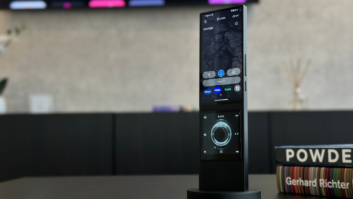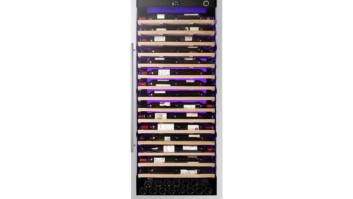Hitachi America last Monday kicked off its largest consumer advertising and marketing effort in years, a multimillion dollar effort that will start on cable TV, then go to print and online media nationally until February 2007.
In addition, as reported initially on TWICE.com, Daniel Lee has joined Hitachi America as marketing VP. A 15-year veteran of the CE business, Lee comes over from Maxell, a subsidiary of Hitachi Maxell of Tokyo, where he was also marketing VP. Prior to that Lee was marketing communications director for LG Electronics.
Lee said the campaign will “exceed $20 million” and will run until the Super Bowl. The campaign, called “Power Unleashed” will focus on its 2006 plasma HDTV lineup which includes the model HDS69 42W-inch plasma TV, as well as a picture of a white leopard taken by photographer/director Jean-Paul Goude. This campaign is part of a three-year marketing commitment to the brand in the United States. (That 42W-inch plasma began shipping in late May with a suggested retail of $2,499. Its price was officially cut yesterday to $2,199.)
The effort is nothing short of a re-introduction of the Hitachi brand, which had taken a low profile in the past couple of years. Industry veteran Kevin Sullivan, Hitachi’s senior VP and chief strategy officer, has been with the company since January 2005. He said, “I’ve been in the industry for over 40 years and I was with Mitsubishi in the 1980s when they made the decision to focus on the CE side of the business [and] push large screen TV, and the operation received the benefits for a decade. This is what [Hitachi] is doing here. For me it is the rare occurrence of lightning striking twice.”
Sullivan said that Hitachi is “known as a factory-driven, technology company that is the owner of 45,000 video patents worldwide. It’s known as being innovative in designing world-class markets.” But he admitted Hitachi was also known as being “unable to market its own brand.”
The last three years of planning changed everything, Sullivan noted. “Asian companies now realize there is a potential bonanza in digital video technology and HDTV. An opportunity like this only comes around every 25 to 30 years in this business, so Hitachi positioned itself to take advantage of that.”
He said that during the past three years Hitachi made multi-billion dollar investments in core components, investing $1 billion with Fujitsu on a plasma plant and then spending an additional $800 million to take over most of the plant, including patents. Hitachi also entered into a joint venture with Toshiba and Panasonic two years ago on an LCD plant that began production recently. Of the $2 billion invested in the plant, Hitachi owns half.
“We are now a major player in both plasma and LCD technology. We are ahead of the curve on any new video display technology, such as SED and OLED. The positioning we’ve gone through should make us one of the major suppliers of HDTV left standing ten years from now,” he claimed.
The investment in technology was matched with a decision to take Hitachi, in Sullivan’s words, “predominantly a company focused on the Japan market, into a global video business leader and make that business bigger than our sales in Japan.”
The key was to take Hitachi’s corporate culture of being “factory-driven to a market-driven company,” Sullivan said, and it changed its distribution in the U.S. to match the company’s aspirations.
“We have expanded our distribution in an orderly fashion. For years we were predominantly doing business with Circuit City, Sears, NATM and a few independents like H.H. Gregg. Since then we have expanded to add Best Buy, Wal-Mart and other channels to expand our business and support their massive growth,” he said. “We had to build our distribution without losing what we have built with our existing retailers.”
Sullivan noted that in the past year Hitachi changed its sales organization to make it more decentralized, dividing the sales operation into zones with top people and using two-step distribution for many retailers “like the rest of the industry. We are aligned with buying groups that cater to small- and medium-sized dealers, like Brand Source’s HES operation and the Nationwide Marketing Group.”
In Japan the reigns of top management were taken over by executives who “came from the market, not from the factory,” and the CE industry veteran noted, “I’ve never seen a Japanese company move this quickly. It has been a lot of fun to watch.”
It should be a lot of fun for Sullivan, and now Lee, who said the appeal of coming to Hitachi now is because “this enormous entity is making a major investment in the U.S. market, in order for it to become a larger, global brand going forward.”













